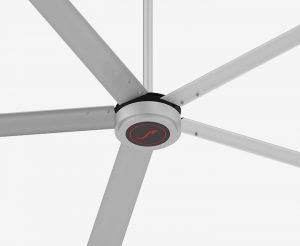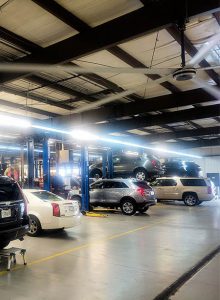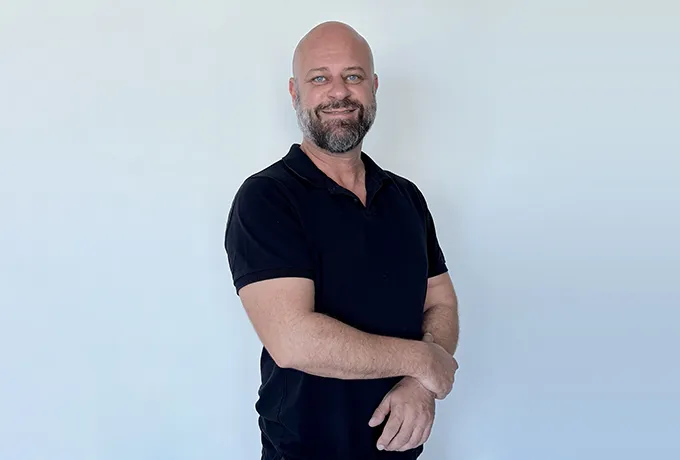Stagnant air, ever-rising energy bills, and inefficient cooling can hamper your comfort or productivity, especially in large spaces. These issues agitate you every day—making operations feel stressful and costly. The solution? Install a ceiling fan or HVLS fan to boost airflow, slash energy use, and elevate indoor comfort.
The cost to install a ceiling fan or an HVLS fan varies based on size, complexity, and labor rates. A standard ceiling fan might cost around $100–$300 for installation, while HVLS ceiling fans can range from $2,000 to over $10,000—plus installation cost. Major factors include fan model, ceiling height, and whether you need an electrician. A larger fan naturally comes with higher material and labor expenses. Still, many businesses find the upfront cost worthwhile for energy savings and better airflow.

HVLS Fan
An HVLS fan—short for High-Volume, Low-Speed—is designed to move much air at a low speed, effectively distributing air across larger spaces. Unlike a typical ceiling fan, this industrial hvls fans solution has much bigger blades that can reach diameters of 8 to 24 feet or more.
HVLS fans are designed to push air slowly but powerfully. The result? Widespread airflow that cools or ventilates huge facilities like warehouses, manufacturing plants, or even gyms. Because these fans can shift a large volume of air with minimal rotations, they reduce energy costs by supplementing or replacing expensive HVAC systems.
Industry Experts note that an HVLS fan may displace enough air to effectively cool the same area that would usually require multiple smaller fans. This consolidated approach can lower electricity usage.
A standard ceiling fan suits smaller rooms, offices, or areas with moderate ceiling height. But if you manage an extensive or high-ceiling environment, you might want the broader coverage of hvls ceiling fans.
That’s why large industrial ceiling fan manufacturers specialize in HVLS—these fans typically provide high-impact coverage. Whether you’re a business owner or facility manager, choosing the correct approach to air circulation ensures employees, customers, or visitors remain comfortable year-round.
The installation cost of an HVLS fan hinges on many elements. Much does it cost? That depends on the brand, the size of the fan, and your local labor rates.
Tip: “Sometimes paying a bit more for a reputable brand or comprehensive warranty up front can save you a substantial sum over the life of a fan,” says a manager from a global hvls fans manufacturing plant.
At first glance, a fan installation might look easy—especially if you’ve already had to install a ceiling fan at home. But for HVLS ceiling fans, bigger size means higher stakes. Incorrect mounting or miscalculated air movement can reduce the fan’s effectiveness and risk safety issues.
HVLS fans are big and powerful. They need to be installed properly to ensure the maximum coverage of airflow, minimal mechanical strain, and optimum energy efficiency results.
Let’s do a quick breakdown. For a typical ceiling fan cost, you might pay $100–$300 for the fan installation alone, not including the fan device itself. Meanwhile, an HVLS fan can cost thousands or tens of thousands of dollars if you factor in top-tier motors and specialized mounting gear.
| Fan Type | Cost of the Fan | Install Labor | Use Case |
|---|---|---|---|
| Residential | $50–$500 | $100–$300 | Bedrooms, living rooms, small offices |
| HVLS | $2,000–$15,000+ | $500–$5,000+ (depending on complexity) | Factories, warehouses, school gyms, large open spaces |
Why the Significant Price Difference?
Cost around a couple thousand dollars for a smaller HVLS. But if you want to effectively cool the room of a large facility, you might pay more for fans are built to handle rigorous workloads.
Install a HVLS Fan
Sometimes, older or under-structured buildings have weak or exposed overhead frameworks. Installing an HVLS fan safely might require strengthening your rafters or adding new beams. That’s where cost to install a ceiling or reinforce it may come into play.
HVLS fans are large, so the mounting points must handle the mechanical load and torque. The final cost of an hvls project can spike if structural work is necessary.
Hiring an electrician is often recommended or mandated by building codes, especially if you lack in-house expertise. Unlike a standard exhaust fan, an HVLS or large ceiling fan typically has a more robust motor, so correct wiring is crucial.
A qualified electrician ensures your HVLS system is integrated seamlessly with existing power lines, thereby preventing downtime or compliance issues in the future.
An exhaust fan typically vents air out of an enclosed space, pulling stale air or fumes to the outside. Conversely, an HVLS fan pushes or mixes cool air and hot air inside your environment, creating even temperatures.
Fans may share the broad goal of airflow, but they differ drastically:
| Criteria | HVLS Fan | Exhaust Fan |
|---|---|---|
| Primary Function | Distribute, recirculate, and optimize interior air | Expel air, odors, or moisture outdoors |
| Ideal for | Large open areas (gyms, factories, barns) | Kitchens, restrooms, chemical-laden zones |
| Effect on Temperature | Evens out or destratifies air (pushing down hot air) | Generally lowers temperature by removing hot or humid air |
So, HVLS fans do not replace exhaust units in applications where you must remove contaminated air. They can, however, dramatically improve air conditions by boosting internal ventilation in big volumes.
When factoring in the cost of hvls, it’s helpful to dissect what you’re really paying for. The fan model, size, brand, and complexity each determines the price. Let’s check the typical cost components:
Good to Know: The longer warranty can save you money in the future. A sign that a manufacturer is confident in their products is a robust coverage plan, guaranteeing minimal repair expenses over time.
Finally, let’s talk about the benefits of hvls fans. Given their upfront cost, it’s normal to question if they’re worth it. HVLS ceiling fans can pay off significantly over their lifespan, especially in large spaces.
Fans offer a stable indoor climate with minimal mechanical stress. Over the years, business owners find the purchasing an hvls fan wise, as it saves on energy consumption and fosters better working conditions. Because the fan gently disperses hot air near the roof, it can effectively cool the room by preventing thermal layers from building up.

HVLS Fans in Large Spaces
How large an HVLS fan should I get?
HVLS size by two things: your ceiling height and area where paying attention is crucial. Typically, 8-foot to 24-foot diameters are standard. A distributor will assist you in matching the size of the fan to your facility’s square footage.
Does installing an HVLS fan require special wiring?
Yes, a large fan installation typically demands its own circuit to handle the motor’s load. An electrician ensures everything is safe and code-compliant.
Why do HVLS fans cost more than standard ceiling fans?
HVLS fans are bigger and built for constant operation in larger spaces, requiring robust motors and durable materials. This design ensures they can efficiently handle industrial usage with minimal breakdowns.
Should I get factory installation done or do it myself?
While some attempt manufacturer and self-installing, professional installation is recommended. If the manufacturer or vendor offers specialized installation, it’s often a sign they provide thorough support and are confident in their products.
Will anodized blades help prevent corrosion?
Yes, anodized blades help prevent corrosion. Many manufacturers anodize the blades of industrial fans to guard them against rust, especially in humid or chemical environments.
Can HVLS fans handle rising hot air near the ceiling?
Absolutely. By blending overhead hot air with cooler air below, HVLS can effectively cool the room more uniformly. This also reduces the strain on your heating and cooling needs.
By weighing these cost to install a ceiling factors, labor needs, and the fan model you choose, you can navigate the final pricing of your HVLS fan project with confidence. Whether you oversee a warehouse, gym, or corporate building, a well-planned HVLS solution could bring you serious comfort and relief in the long run—making it a wise investment in airflow management.

Hi, I’m Michael Danielsson, CEO of Vindus Fans, with over 15 years of experience in the engineering and design industry. I’m here to share what I’ve learned. If you have any questions, feel free to contact me at any time. Let’s grow together!